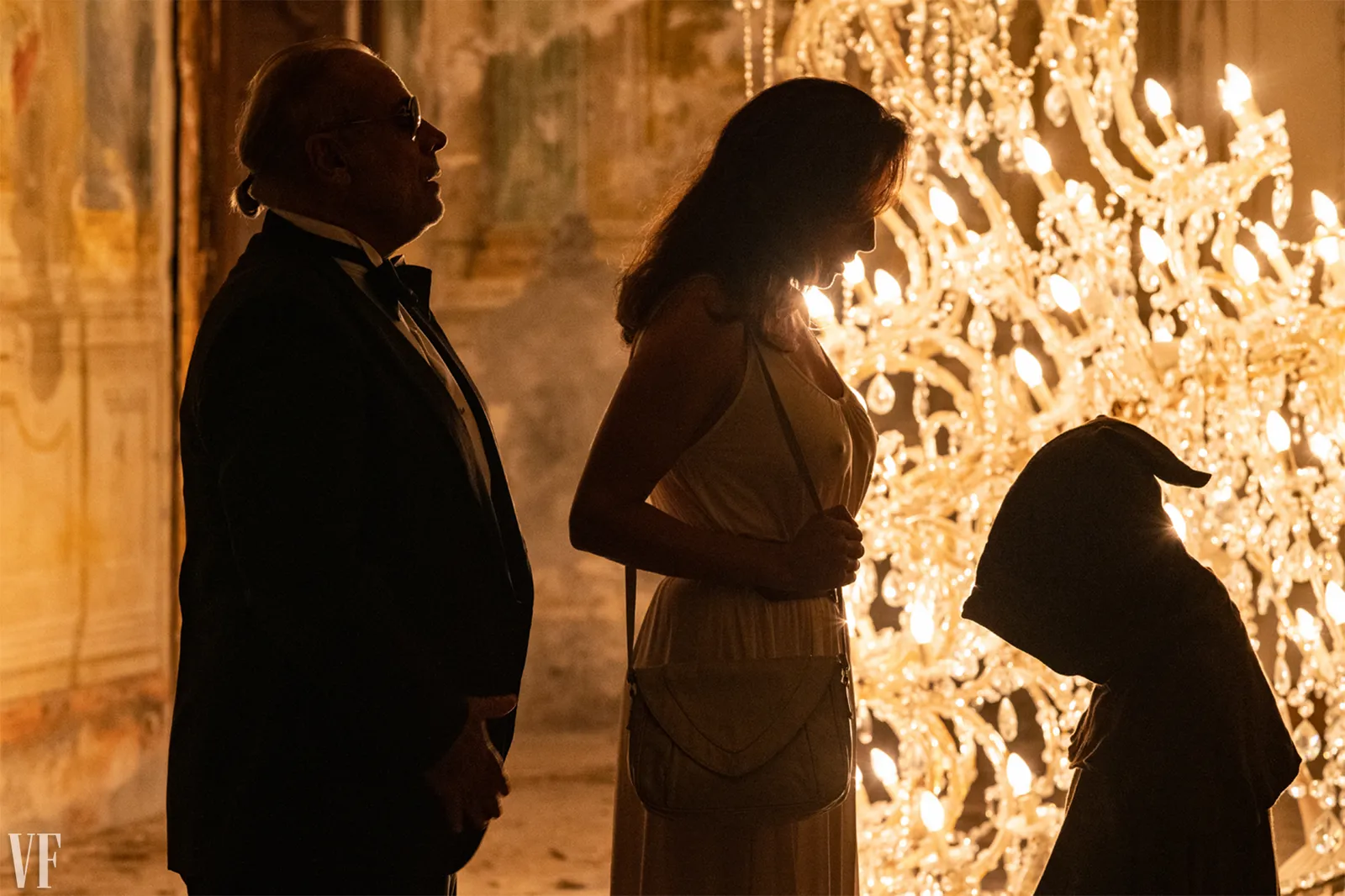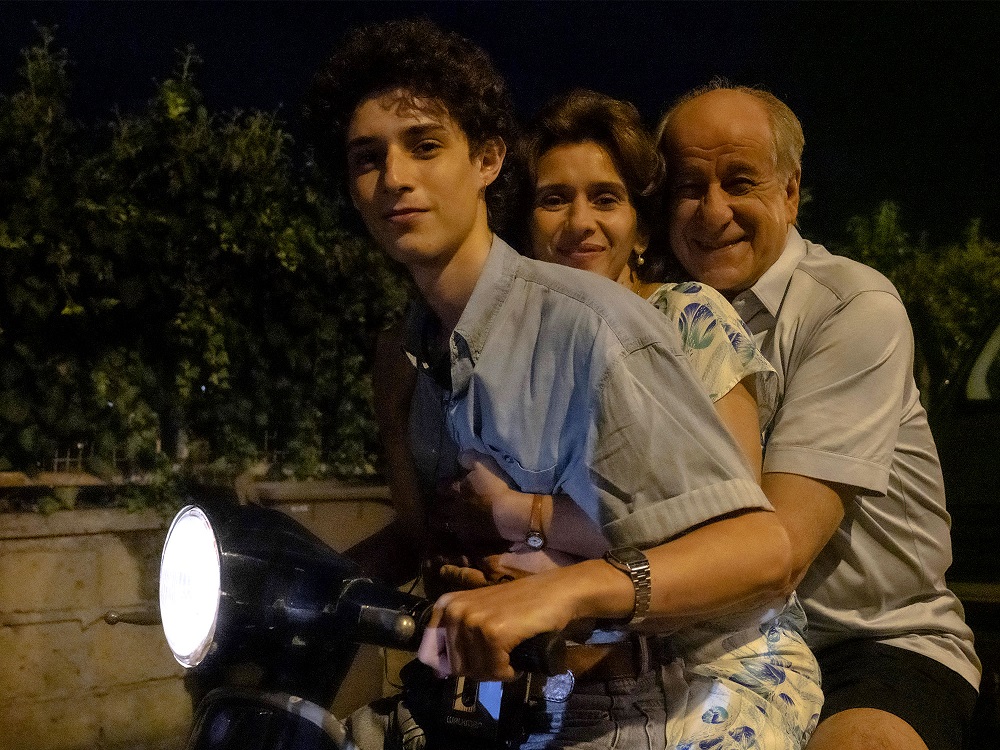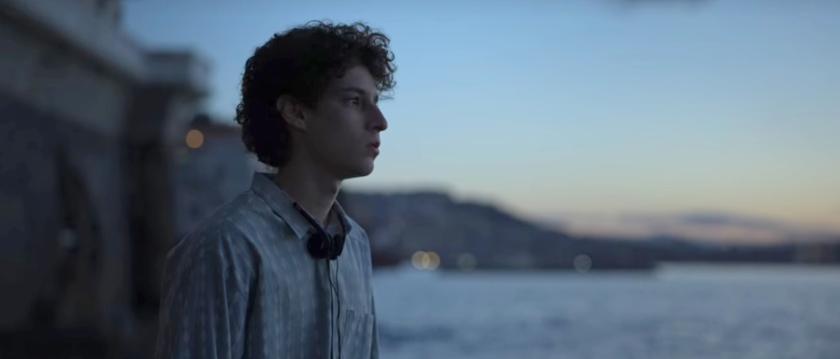“It was the hand of God,” says the Neapolitan family patriarch about a rather unexpected consequence of Maradona's coming to play for the city’s team. That gives us a date, 1984, and, while the adolescent protagonist Fabietto remains in Naples, a fleeting sense of time and place.
Paolo Sorrentino never resorts to the dully realistic or overdoes the period detail, though. This location for a transfigured autobiography is rarely the noisy, vivacious place which brands itself on the memory in most books, films or touristic experience. At the start of a film graced throughout by Daria D'Antonio's note-perfect cinematography, the camera tracks across the Bay of Naples to the seafront and a vintage car containing an unlikely personification of San Gennaro; is this, and the manifestation of the Little Monk who grants fertility (pictured below), all fantasy in the mind of the beautiful woman who turns out to be Fabietto’s aunt?
The fact that it’s not accompanied by the usual film music sharpens our senses. Indeed, Leno Marchitelli's score is kept to a minmum: a melancholy cello only giides into earshot at the half-hour mark, and the other musical manifestations are limited to six other short bursts and the song for the final credits as our protagonist, now Fabio, puts his headphones on as the train heads for Rome.  At first the fragments of memory are a dazzling series of cinematographic tesserae, including observations of a mostly happy family and a number of Fellini grotesques – literally so when Fabietto’s brother goes to a screen test of 4000 or so types auditioning for the great director. This, of course, Is Sorrentino’s version of Amarcord, but the moments of exuberance, big breasts and large ladies are overshadowed by an underlying melancholy and the hand of tragedy halfway through. The shock – no spoilers – is accentuated by the long scene we interpret as one of the most touching tenderness just before it.
At first the fragments of memory are a dazzling series of cinematographic tesserae, including observations of a mostly happy family and a number of Fellini grotesques – literally so when Fabietto’s brother goes to a screen test of 4000 or so types auditioning for the great director. This, of course, Is Sorrentino’s version of Amarcord, but the moments of exuberance, big breasts and large ladies are overshadowed by an underlying melancholy and the hand of tragedy halfway through. The shock – no spoilers – is accentuated by the long scene we interpret as one of the most touching tenderness just before it.
The pace now slows more consistently and crucial dialogues accumulate: with the asylum-bound aunt, with the Baroness who lives upstairs in the Vomero apartments which were Sorrentino’s home for 34 years, with a seemingly manic-depressive cigarette smuggler and with the director Capuano (a real figure, I presume – Luigi, it seems). Emotions can touch you at unlikely moment: when the grandmother, early on a figure of fun with her foul mouth and the fur coat she insists on wearing in summer, recites Dante to the boy who can’t cry, when Capuano takes the plunge into the bay of Naples. A night trip to Capri followed by a brief stay on Stromboli mark the first stages of Fabietto’s striking out from the narrow neighbourhood (there are neat correspondences here with another unsurpassable cinematic tale about a southern Italian coming of age, the magnificent series so far faithful to Elena Ferrante’s Neapolitan Quartet). Capuano’s advice is to stay put and absorb the tales the city has to tell; but the weight of sadness means Fabio has to get away.  Changing rhythms and careful symmetries in what could be an impressionistic ramble come with a master’s touch. And the ensemble is perfect, probably the reason I haven’t summoned cast names so far. Toni Servillo gets star billing as Fabio’s dad, but we perhaps see more of the loving mother (Teresa Saponangelo) with her skills at juggling with oranges and her audacious practical jokes. Relatives and alternative father figures are deftly drawn, and the loneliness of the introspective protagonist is conveyed to perfection by Filippo Scotti (pictured above with Servillo and Saponangelo). If you question anything in this film, the answer lies in Sorrentino’s masterly right to depict what he wants (watch the extra minidocumentary, also on Netflix, eight minutes in). And he does it perfectly.
Changing rhythms and careful symmetries in what could be an impressionistic ramble come with a master’s touch. And the ensemble is perfect, probably the reason I haven’t summoned cast names so far. Toni Servillo gets star billing as Fabio’s dad, but we perhaps see more of the loving mother (Teresa Saponangelo) with her skills at juggling with oranges and her audacious practical jokes. Relatives and alternative father figures are deftly drawn, and the loneliness of the introspective protagonist is conveyed to perfection by Filippo Scotti (pictured above with Servillo and Saponangelo). If you question anything in this film, the answer lies in Sorrentino’s masterly right to depict what he wants (watch the extra minidocumentary, also on Netflix, eight minutes in). And he does it perfectly.















Add comment